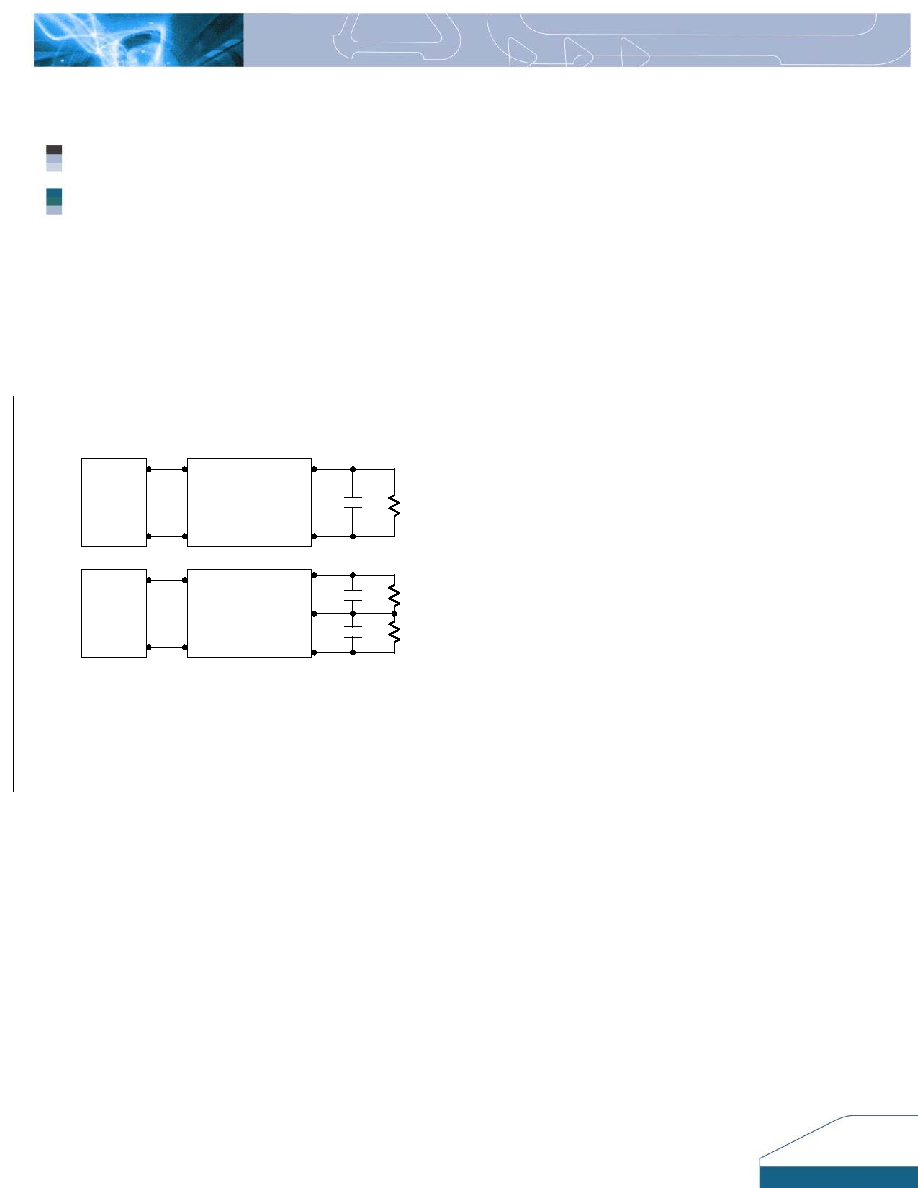- 您現(xiàn)在的位置:買賣IC網(wǎng) > PDF目錄298987 > DDW1046 DC-DC REG PWR SUPPLY MODULE PDF資料下載
參數(shù)資料
| 型號: | DDW1046 |
| 元件分類: | 電源模塊 |
| 英文描述: | DC-DC REG PWR SUPPLY MODULE |
| 封裝: | PLASTIC, DIP-6/16 |
| 文件頁數(shù): | 5/8頁 |
| 文件大小: | 274K |
| 代理商: | DDW1046 |

5
Design & Feature Considerations
Maximum Capacitive Load
The DDW1000 series has limitation of maximum
connected capacitance at the output. The power
module may be operated in current limiting mode
during start-up, affecting the ramp-up and the startup
time. The maximum allowed capacitive load is listed in
table on page 2.
Output Ripple Reduction
A good quality low ESR capacitor placed as close as
practicable across the load will give the best ripple and
noise performance.
To reduce output ripple, it is recommended to use
3.3uF capacitors at the output.
+Out
-Out
+Vin
-Vin
Load
DC Power
Source
+
-
Cout
Single Output
DC / DC
Converter
+Out
-Out
+Vin
-Vin
Load
DC Power
Source
+
-
Cout
Com.
Dual Output
DC / DC
Converter
Overcurrent Protection
To provide protection in a fault (output overload) condition,
the unit is equipped with internal current limiting circuitry
and can endure current limiting for an unlimited duration.
At the point of current-limit inception, the unit shifts from
voltage control to current control. The unit operates
normally once the output current is brought back into its
specified range.
Soldering and Cleaning Considerations
Post solder cleaning is usually the final board assembly
process before the board or system undergoes electrical
testing. Inadequate cleaning and/or drying may lower the
reliability of a power module and severely affect the
finished circuit board assembly test. Adequate cleaning
and/or drying is especially important for un-encapsulated
and/or open frame type power modules. For assistance
on appropriate soldering and cleaning procedures,
please contact Delta’s technical support team.
Notes:
1. These power converters require a minimum output load
to maintain specified regulation (please see page 6 for
the suggested minimum load). Operation under no-load
conditions will not damage these modules; however,
they may not meet all specifications listed above.
2. These DC/DC converters should be externally fused at
the front end for protection.
相關(guān)PDF資料 |
PDF描述 |
|---|---|
| DDW1021 | DC-DC REG PWR SUPPLY MODULE |
| DDW1024 | DC-DC REG PWR SUPPLY MODULE |
| DDW1043 | DC-DC REG PWR SUPPLY MODULE |
| DDW1045 | DC-DC REG PWR SUPPLY MODULE |
| DDW1036 | DC-DC REG PWR SUPPLY MODULE |
相關(guān)代理商/技術(shù)參數(shù) |
參數(shù)描述 |
|---|---|
| DDW-CJD-R1 | 制造商:DOMINANT 制造商全稱:DOMINANT Semiconductors 功能描述:LED InGaN White |
| DDW-CJD-R2 | 制造商:DOMINANT 制造商全稱:DOMINANT Semiconductors 功能描述:LED InGaN White |
| DDW-CJD-RS2-1 | 制造商:DOMINANT 制造商全稱:DOMINANT Semiconductors 功能描述:LED InGaN White |
| DDW-CJD-S1 | 制造商:DOMINANT 制造商全稱:DOMINANT Semiconductors 功能描述:LED InGaN White |
| DDW-CJD-S2 | 制造商:DOMINANT 制造商全稱:DOMINANT Semiconductors 功能描述:LED InGaN White |
發(fā)布緊急采購,3分鐘左右您將得到回復(fù)。